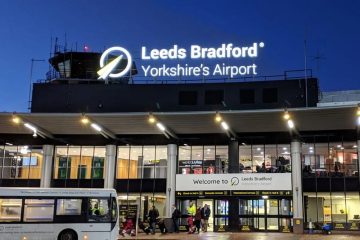The Impact and Future of the London Underground

Introduction
The London Underground, often referred to as ‘the Tube’, is a pivotal transport system in the United Kingdom, serving millions of passengers each day. As one of the oldest subway systems globally, it plays a crucial role in the city’s economy, transport infrastructure, and cultural identity. This article examines the significance of the London Underground, its recent developments, and what the future may hold for this iconic system.
Current Developments
Recent years have seen considerable investments in the London Underground aimed at enhancing the passenger experience and expanding capacity. The introduction of new technology, including contactless payment systems and real-time service updates, has made it more convenient for users. According to Transport for London (TfL), the system recorded over 1.3 billion passenger journeys in 2022, highlighting the reliance on this network for daily commuting.
Additionally, the ongoing upgrades to accessibility at various stations ensure that people with disabilities can navigate the system more easily. Examples include the installation of lifts and ramps at key locations, reflecting a commitment to inclusivity. The recently completed Elizabeth line, while not part of the Tube network, connects to it, improving access towards the East and West of London.
Challenges Faced by the System
Despite its significance, the London Underground faces numerous challenges. One of the most pressing issues is overcrowding, particularly during peak hours. Passengers often report cramped conditions, impacting the overall user experience. Authorities are exploring solutions, including service frequency adjustments and longer trains, to alleviate these concerns.
Furthermore, budget constraints following the COVID-19 pandemic have impacted operational funding. TfL has had to navigate financial pressures while ensuring essential services remain running. A recent report in the Evening Standard indicated that service cuts could become a reality unless funding is secured, leading to potential disruptions for commuters.
The Future of the Underground
Looking ahead, the London Underground aims to integrate more sustainable practices into its operations. With climate change increasingly at the forefront, TfL has committed to achieving net-zero carbon emissions by 2030. Investments in energy-efficient trains and infrastructure are critical to meeting this target.
Finally, evolving commuter behaviours due to hybrid working models may influence future service structures. As patterns change, a flexible and adaptive approach will be essential to maintain relevance and efficiency in the transport network.
Conclusion
The London Underground remains an essential part of London’s identity and infrastructure. While it confronts challenges related to overcrowding and funding, ongoing improvements and a commitment to sustainability could enable it to thrive for generations to come. For residents and visitors alike, the Tube will continue to be an integral component of navigating the bustling metropolis.









